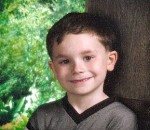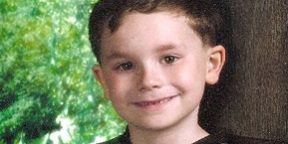 Hennepin County Judge Heidi Schellhas shared her records of very young children taking psychotropic medications that had passed through her courtroom with me in 2005 (for my book, Invisible Children).
Hennepin County Judge Heidi Schellhas shared her records of very young children taking psychotropic medications that had passed through her courtroom with me in 2005 (for my book, Invisible Children).
It was astounding to see how many six and seven year old children in Hennepin County’s Child Protection system take Prozac and other psychotropic medications. Since the book, I have followed reporting about the medicating of the very young from states and counties around the nation.
Most states that have reported on this topic run between 1/4 and 1/3 of their child protection children on psychotropics and teens in foster homes appear to use these drugs at a higher level. It appears that the use of psychotropic medications by non-foster children occur at less than 20% of the rate as the use of these drugs by foster kids.
Most states don’t track the data and those that do don’t make it easy to find.
I believe that not tracking this data is wrong. It is only by tracking and reporting how many six year old children are being forced to use psychotropics will the larger community begin to understand the depth and scope of the problem these children have with mental health issues.
In my experience as a volunteer CASA guardian ad-Litem, these children are medicated so they will be docile and easier to manage. Foster children are often treated with anti-psychotics even though their mental problems are the result of trauma caused by abuse and neglect and not the bipolar disorders and schizophrenia these drugs were designed to treat.
Rather than providing mental health services that could help traumatized children learn and gain the coping skills they need to live, we just find it cheaper and less trouble to proscribe Ritalin, Prozac, antidepressants, and other mind numbing drugs that often come with serious side effects.
Suicidal thoughts are one of the awful side effects of these drugs (a suicide warning appears on the labels of these drugs).
I have had personal experience with suicidal ideation as a result of being prescribed Topamax. It was more or less forced on me as an “off-label” use of an anti seizure medication for my migraine headaches (that did not work).
At a business lunch with a banker, in the middle of the day, I had the most frightening experience of my life because of Topamax; fully formed thoughts of violent suicide. There is nothing controllable about these thoughts – they just occur.
Even though I study mental health (it has become apparent to me that the most critical issues for children removed from their homes is mental health), these violent thoughts of suicide were a traumatizing event for me, a mature adult who understood where these violent thoughts had come from.
How could this kind of thing be visited on a six year old? When Colorado studied the issue, they found that about half of the children on government insurance that had been proscribed psychotropics, had not been diagnosed with a psychotic illness, but were taking the drugs as an “off-Label” reason not approved by the FDA.
Seven year old foster child Gabriel Meyers hung himself and left a note about how he hated Prozac. My first visit to a four year old child protection girt was at the suicide ward of Fairview Hospital in Minneapolis.
Other awful side effects of these drugs are serious and unstoppable weight gain, diabetes, breast development in boys, and reality detachment.
Many of the children I worked with in child protection were proscribed multiple medications. It was said to me on several occasions by people in positions of power, that there were no other options for keeping these children safe.
Almost 20 years of volunteer involvement with child protection services has convinced me that these powerful drugs solve some of the short term behavioral problems traumatized children have but they are causing more problems than they are solving.
By taking the cheapest and fastest approach to traumatized children, we are denying them the services they must have to develop the coping skills needed to live a normal life.
Until we make the mental health issues of children important conversation with better answers; unsafe communities, overcrowded prisons, poor school results, and a host of quality of life measurements will keep too many American communities unsafe and unhappy.








